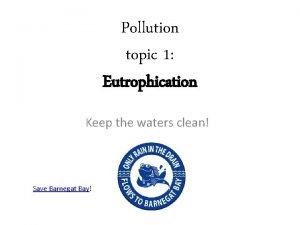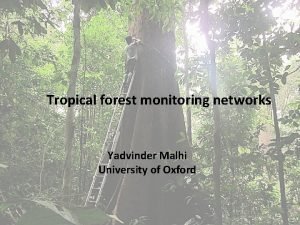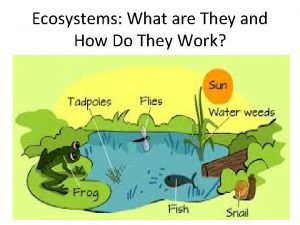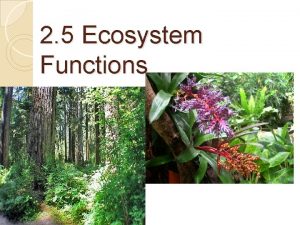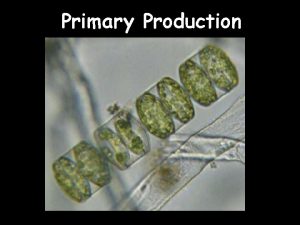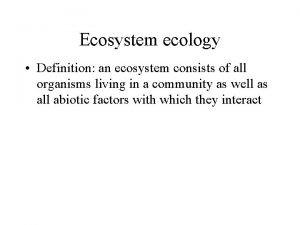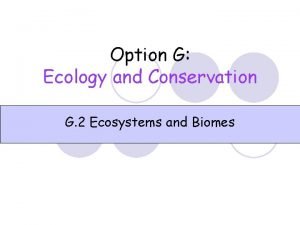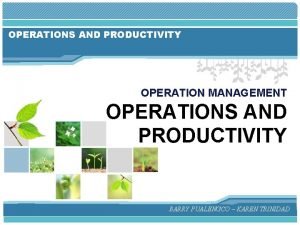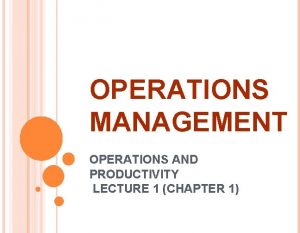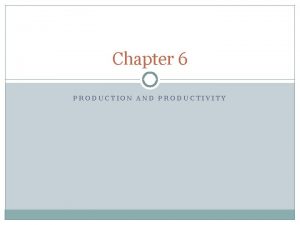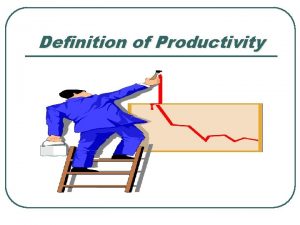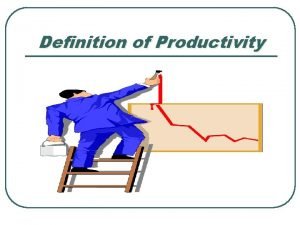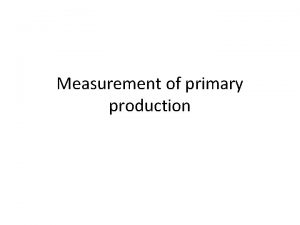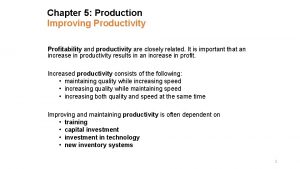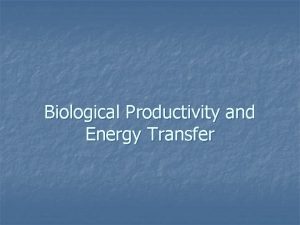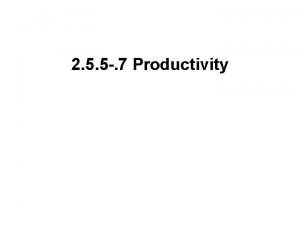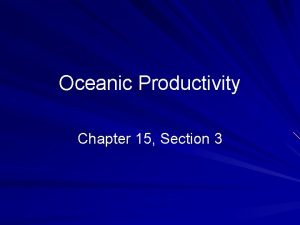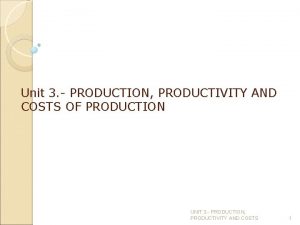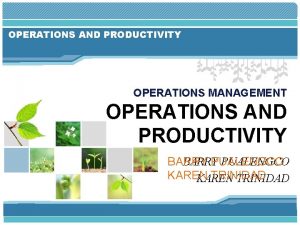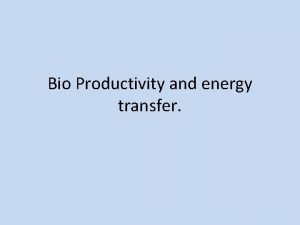Net Primary Productivity and World Net Primary Production




















- Slides: 20

Net Primary Productivity and World Net Primary Production for Major Ecosystems _________________________________ Net Primary Productivity per Unit Area (dry g/m 2/yr) World Net ––––––––––––– Primary Area Normal Production 6 2 (10 km ) Range Mean (109 dry tons/yr) _________________________________ Lake and stream 2 100– 1500 1. 0 Swamp and marsh 2 800– 4000 2000 4. 0 Tropical forest 20 1000– 5000 2000 40. 0 Temperate forest 18 600– 2500 1300 23. 4 Boreal forest 12 400– 2000 800 9. 6 Woodland shrubland 7 200– 1200 600 4. 2 Savanna 15 200– 2000 700 10. 5 Temperate grassland 9 150– 1500 4. 5 Tundra and alpine 8 10– 400 140 1. 1 Desert scrub 18 10– 250 70 1. 3 Extreme desert, rock, ice 24 0– 10 3 0. 07 Agricultural land 14 100– 4000 650 9. 1 Total land 149 730 109. 0 Open ocean 332 2– 400 125 41. 5 Continental shelf 27 200– 600 350 9. 5 Attached algae, estuaries 2 500– 4000 2000 4. 0 Total ocean 361 155 55. 0 Total for earth 510 320 164. 0 _________________________________

Potential Evapotranspiration (PET) theoretical temperature-dependent amount of water that could be “cooked out” of an ecological system, given its input of solar energy and provided that much water fell on the area Actual Evapotranspiration (AET) “reverse of rain” actual amount of water returned to the atmosphere (always less than or equal to PET)


During a period of water surplus, some water may be stored by plants and some may accumulate in the soil as soil moisture, depending on runoff and the capacity of soils to hold water; during a later water deficit, such stored water can be used by plants and released back into the atmosphere. Winter rain is generally much less effective than summer rain because of the reduced activity (or complete inactivity) of plants in winter; indeed, two areas with the same annual march of temperature and total annual precipitation may differ greatly in the types of plants they support and in their productivity as a result of their seasonal patterns of precipitation. An area receiving about 50 cm of precipitation annually supports either a grassland vegetation or chaparral, depending on whether the precipitation falls in summer or winter, respectively.

6 CO 2 + 12 H 2 O ——> C 6 H 12 O 6 + 6 O 2 + 6 H 2 O carbon + water ——> Glucose + oxygen + water dioxide CO 2 fairly constant at about 0. 03 - 0. 04 percent of air (anthropogenic increase) (CO 2 seldom limits the rate of photosynthesis, usually it is limited by availability of either light or water)

Primary Productivity versus Average Annual Precipitation



Pedogenic Factors Climate Time Topography Organisms (especially vegetation) Parent materials V. V. Dokuchaev

Serpentine soils form over serpentine rock. Rich in magnesium, chromium, and nickel. Contain little calcium, nitrogen, or phosphorus. Support a stunted vegetation (low productivity) Introduced Mediterranean weeds in California Primary succession is the development of soils from bare rock, a slow process that takes centuries.

Tropical soils Litter fall high, but decomposes rapidly High rainfall leaches out water soluble nutrients Nutrient poor soils cannot sustain agriculture Slash and burn, move on …strategy Secondary succession on mature soils Rapidly growing colonizing species give way to slow growing, shade tolerant, climax species

One to one correspondence between climate, vegetation, and soils

Ecotones


Bathythermographs High Specific Heat of Water Heaviest at 4° C ( ice floats ) Eutrophic Lakes Oligotrophic Lakes Isothermal at Spring and Fall Turnover

Vertical Diurnal Migration of Freshwater Phytoplankton and Zooplankton

Resource Acquisition and Allocation Limiting Factors

Tolerance Curves Principle of Allocation


Resource Budgets Principle of Allocation Time, Matter, and Energy Budgets Rock Pipits Anthus spinoletta Mild Winter versus Harsh Winter Feeding: 6. 5 hours vs. 8. 25 hours Resting: 1. 75 hours vs. 0. 6 hours �Fighting: 0. 75 vs. hours 0. 1 hour
 Arti post production
Arti post production Production and productivity definition
Production and productivity definition Define productivity
Define productivity Process of primary productivity
Process of primary productivity Gross primary productivity
Gross primary productivity Primary productivity
Primary productivity Net secondary productivity
Net secondary productivity Spring bloom
Spring bloom Ecosystem ecology definition
Ecosystem ecology definition World motor vehicle production
World motor vehicle production What is the primary site factor for production of textiles
What is the primary site factor for production of textiles Primary, secondary and tertiary food processing
Primary, secondary and tertiary food processing Net production of consumers equation
Net production of consumers equation Productivity in operations management
Productivity in operations management Productivity competitiveness and strategy
Productivity competitiveness and strategy Service quality and productivity
Service quality and productivity Service quality and productivity
Service quality and productivity Relationship between safety, quality and productivity
Relationship between safety, quality and productivity Operations and productivity
Operations and productivity Nutrition and productivity
Nutrition and productivity Productivity as a property of language
Productivity as a property of language



